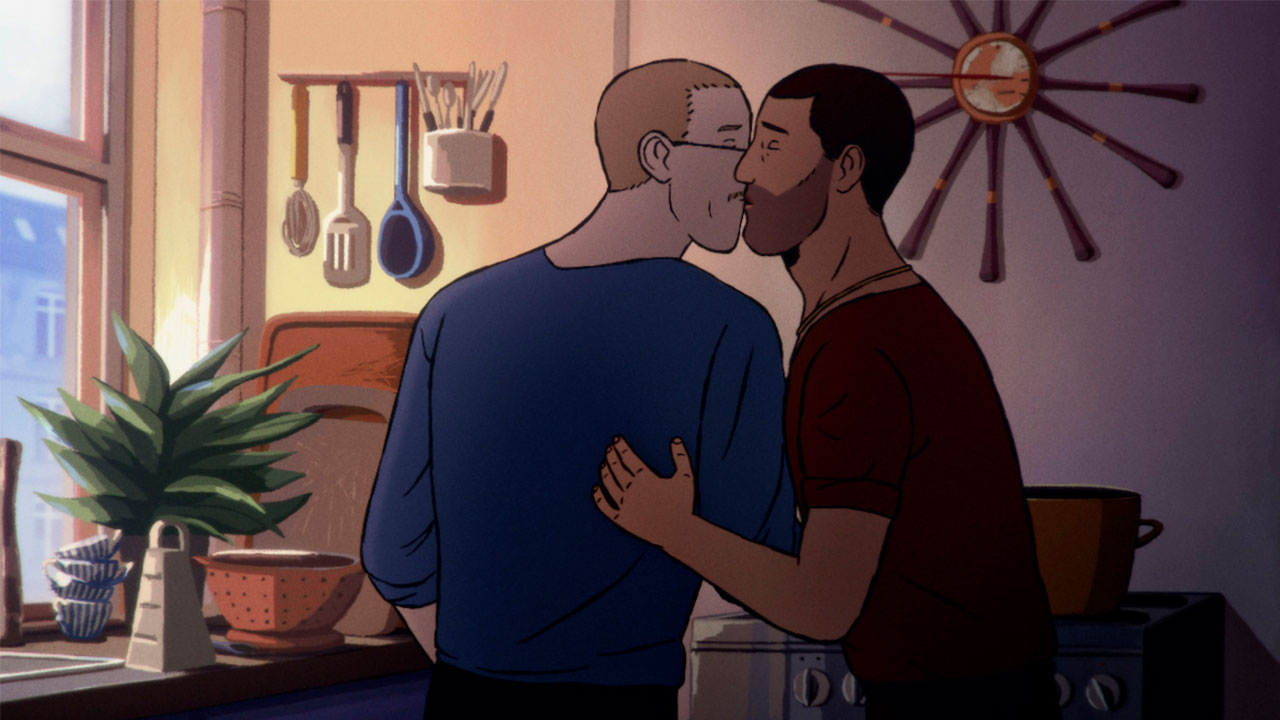What does it mean to have a home? Comfort? Security? Privacy? According to Amin, the mononymous subject of the recent Danish documentary Flee, home is somewhere permanent, a place where you no longer have to run. Amin Nawabi, a name that the film directly acknowledges is a pseudonym, fled his home in Afghanistan at a young age and eventually made his way to Denmark, where he began an academic career. Flee finds Amin on the brink of a new chapter in his life, as he and his boyfriend plan to get married and buy a house. But before he can settle down, Amin feels the need to address his past and tell the whole story of his years-long journey.

Flee is a highly unique and emotionally resonant film: an animated documentary directed by Jonas Poher Rasmussen, one of Amin’s close friends. Pakistani-British actor Riz Ahmed and Danish Game of Thrones star Nikolaj Coster-Waldau both serve as executive producers to Flee, which was an audience favorite at the 2021 Sundance Film Festival in January and won the Grand Jury Prize. The film carries no sense of the exploitation that is often present in documentaries with subjects such as Amin; indeed, interviewer and interviewee met as teenagers as teenagers, almost 20 years before the film, and are shown to still be involved in each other’s lives.
Flee takes its time to show Amin’s character and current life before diving into the horrifying details of his past. The purpose of the film is not to recount a series of traumatic events that occurred a long time ago to some unknowable person; rather, Flee paints a portrait of an exceptional and fascinating man, whose refugee experience is treated with dignity. “I didn’t intend to do a refugee story,” Rasmussen has said. “I wanted to do a story about my friend.” Flee does indeed accomplish this, and it portrays the character and perseverance of its subject in a startling, beautifully intimate manner.

Amin was born the youngest child of a family of six in Kabul, Afghanistan, in the late 1970s. After Amin’s father is tortured and killed for being a political dissident, and the government begins drafting young boys to fight in the Soviet-Afghan War, the family desperately tries to leave. After one failed attempt at flight which lands them in Istanbul and then immediately back in Kabul, Amin, his mother, and his four older siblings eventually escape to Moscow. This occurs around the time of the fall of the Soviet Union, when poverty was rampant and food difficult to come by.
The family stays in Russia for a number of years on an expired visa, trying desperately to make it to a more fortunate part of Europe, preferably Sweden, where the eldest son lives. At one point, while crossing the Baltic Sea in a small fishing boat, Amin thinks he has made it to safety, only to have the Estonian police arrest him for having tried to enter the country illegally, and ship him back to Moscow. Only when he is a young teen, after nearly ten years of being on the run, his mother pays a human trafficker a large sum to create a fake passport and smuggle him to Denmark. Sharing his story with his friend gives Amin the emotional capability to move forward with his life. The film ends with Amin, almost thirty-five years after he left his home in Kabul, finally getting married and having a home of his own. It is an immense relief to see Amin finally living the life he has always deserved.

The film’s artistic style beautifully complements its composition and narrative. Because Flee is animated, the audience is able to visualize and experience more of Amin’s childhood than would have been possible via recreated scenes or interview footage. Viewers who know very little about Afghanistan will come away from the film with a sense of intimacy and sympathy for the country because of the beautiful way in which the Kabul of Amin’s childhood is portrayed. The animation consists of thick, bold lines that vividly show Amin flying kites and tending to pigeons on the rooftop, running through the streets in a dress while listening to American music on his Walkman, wondering with his siblings about where their father has disappeared to.

The more difficult moments, those of pain and grief and loss–and Flee contains many of these–are shown in a more abstract fashion, with blueblack figures and blots appearing on screen. The film also provides historical background in a seamless way by including real historical footage of the events described–the takeover of Kabul by the Mujahideen, for example, or Amin’s boat arriving in Estonia. This contrast between animation and historical footage remains artistic while also being educational.
Flee proves that animation is not just for children–that it can be used in extremely artistic and innovative ways to portray deeply personal stories. Animation is an equalizing medium as it gives those whose lives have not been meticulously filmed (i.e. famous or rich people) the same opportunity to tell their stories. Additionally, animation preserves the privacy of those who are sharing their stories and might fear personal or legal repercussions for doing so. Increased use of animation in the documentary genre would greatly diversify the range of voices and experiences that mainstream audiences see onscreen.
Stories of refugees have always been important, but the recent reclamation of Afghanistan by the Taliban pushes the nation into the forefront of our conscience, particularly in our native Seattle, which is one of only a few cities nationwide that will receive a large number of displacedAfghans in the coming months. Flee humanizes the stories of those unfortunate people whose lives get destroyed in the tangle of geopolitics and war.
Flee was screened at the 2021 SIFF Doc Fest. It will be released in theaters nationwide on December 3.
4.5/5 STARS
